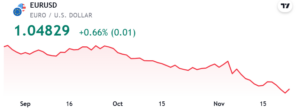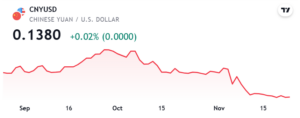
The dollar has long reigned as the world’s premier reserve currency, a symbol of stability and economic dominance. Yet, its supremacy is underpinned by an uneasy reality: staggering levels of US government debt held by foreign central banks and investors. This paradox—where the USD is both a cornerstone of global finance and a potential vulnerability—defines the intricacies of the international monetary order. Despite persistent predictions of its decline, no credible alternative to the dollar has emerged.
The dollar’s journey to reserve currency status began in the aftermath of World War II. Under the Bretton Woods system, global currencies were pegged to the dollar, which was in turn tied to gold. Even after the system collapsed in 1971, the American currency retained its dominance. The reasons were clear: the unparalleled size of the US economy and global confidence in its financial and political systems. Over time, the dollar transcended its role as a medium of trade to become a safe haven for nations seeking economic stability.
READ I US-India under Trump 2.0: A return to reciprocity
Financing deficits: A double-edged sword
The dollar’s global dominance has its perks for the United States. High demand for the currency enables the US to finance its deficits more easily, as foreign investors eagerly purchase Treasury securities. However, this interdependence binds the global economy to U.S. monetary and fiscal policies. A sudden shock—be it from inflation, a fiscal crisis, or political instability—could send ripples across the world.
The US national debt, now at approximately $35.7 trillion, underscores this fragile balance. As the Federal Reserve raises interest rates to curb inflation, the cost of servicing this debt rises, diverting resources from critical government programs and raising alarms about the nation’s long-term fiscal health.
Imagine the US debt as a party balloon, stretching year after year with promises, spending, and mounting obligations. The world watches, captivated and apprehensive, as the balloon grows ever larger. Despite the tension, it remains intact—not because it is indestructible but because no other balloon matches its size or allure. The global audience holds its breath, unsure whether to trust the balloon’s resilience or prepare for the mess if it bursts.
Why rivals fail to dethrone the dollar
Despite its vulnerabilities, the USD faces no serious contenders. The euro, often seen as a potential rival, is hampered by the eurozone’s internal economic disparities and political challenges, including crises like Greece’s debt debacle and Brexit.


The Chinese yuan, while growing in prominence, is constrained by Beijing’s tight capital controls, lack of transparency, and limited trust in its governance. Other currencies, such as the yen and the pound, lack the scale required to compete.
Efforts to bypass the dollar—such as bilateral trade agreements and the BRICS bloc’s push for a shared reserve currency—remain fragmented and immature. Even economic heavyweights like China face fundamental hurdles, such as the global reluctance to store wealth in an economy that can unilaterally alter its rules.
The role of technology
Technology offers a glimpse of potential disruption to the dollar’s hegemony. Central bank digital currencies (CBDCs) and stablecoins could revolutionise global finance, enabling faster, more direct trade while reducing reliance on a single currency. Yet, without global interoperability and trust, these tools remain more speculative than practical as viable alternatives to the dollar.
The dollar’s dominance is bolstered by the unparalleled depth and liquidity of US financial markets. Investors, corporations, and governments value the ability to quickly trade dollar assets without significantly affecting prices. Additionally, the pricing of key commodities like oil in dollars perpetuates its demand. Even nations exploring alternatives often rely on dollar-based benchmarks, reinforcing its central role in global finance.
The global reliance on the dollar creates a precarious paradox. While it remains the safest asset, this safety depends on confidence in an increasingly indebted issuer. Foreign governments—especially China and Japan—hold large portions of US debt as a secure store of value. However, this interdependence poses risks. A loss of faith in US fiscal responsibility or a spike in geopolitical tensions could destabilise the global financial system.
As U.S. debt balloons, the line between strength and vulnerability blurs. The dollar’s dominance persists not because it is flawless, but because no better alternative exists—yet. For now, the world remains tied to the dollar and, by extension, to the fiscal and monetary policies of the United States.
The sustainability of this system hinges on the elasticity of trust in the dollar. As the US continues to accumulate debt, the resilience of this trust will face inevitable tests. The outcomes of these tests will shape the future of global finance, determining whether the dollar’s dominance endures or a new order emerges.
Srinath Sridharan is a strategic counsel with 25 years experience with leading corporates across diverse sectors including automobiles, e-commerce, advertising and financial services. He understands and ideates on intersection of finance, digital, contextual-finance, consumer, mobility, Urban transformation, and ESG. Actively engaged across growth policy conversations and public policy issues.

